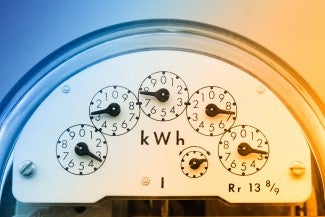Your home’s electrical panel makes it possible to run the systems and appliances that support your lifestyle on a daily basis. However, pushing the capabilities of an electrical panel can be a potential safety issue.
To avoid overloading your panel and to properly prepare for additional energy usage it’s important to understand your panel’s limits and know when it’s time for an upgrade.
Getting to know your home electrical panel
You might not give your electrical panel much thought, but it plays a vital role in your home. Typically operating quietly in the basement, the garage, or outdoors, your panel hosts your property’s breaker switches in a protected metal box where you can toggle the circuits on and off.
Whenever too much electrical current is used on one of these circuits it may cause a breaker to ‘trip’ and automatically shut off as a safety precaution. Repowering a tripped circuit may be as easy as flipping a switch on your electrical panel. Any damage to the panel itself could be a more serious issue.
Electrical panel circuit limits and risks
In contrast to some of the panels used in older homes, most modern residential properties have a panel that can serve between 100 A and 200 A of electricity. Most of these modern panels contain between 20 and 40 different circuits divided among the areas of your home, with each circuit supplying about 15 A to 20 A of total current. Each circuit may have between six and twelve interconnected outlets.
For safety reasons, most home circuits are designed to continuously run approximately 80% of their total amperage rating before a breaker trips. If you install an electric vehicle (EV) charger on a circuit that can’t support the output power, the circuit will trip when charging. For example, a 32 A EV charger must be installed on a 40 A circuit, and an 80 A EV charger must be installed on a 100 A circuit.
Although tripping a breaker doesn’t necessarily cause electrical panel damage, ongoing breaker trips may indicate underlying problems. You should contact an electrician immediately if you believe your home’s electrical panel has been overloaded or damaged.
Common signs of electrical panel damage include:
-
Flickering lights
-
Frequently tripping breakers
-
Repeated instances of power surges
-
Appliances not working
-
Buzzing sounds
-
Burning smells
Upgrading your electrical panel
Increasing your home’s electrical panel limits may be necessary to ensure the safety and performance of high-powered equipment such as solar panels, storage batteries, or Level 2 EV chargers. To prevent damage you should assess if electrical panel upgrades are needed whenever you’re planning to increase your home’s energy use in a substantial way.
As a quick self-evaluation, consider scheduling an electrical panel assessment if you:
-
Have an electrical panel over 20 years old
-
Are installing an EV charger
-
Are installing solar panels or adding home battery storage
-
Are building an addition to your home
-
Are upgrading your home’s major appliances
-
Are experiencing frequent issues with your current equipment
Panel assessments and upgrades should always be performed by an experienced electrician. Working with a professional can help you avoid serious safety risks to yourself, your family, and your property.
Cost of upgrading electrical panels in the U.S.
The expense involved in upgrading your electric panel depends on several factors, including the size of your upgrade, the complexity of your installation, and your electrician’s rates. According to This Old House, the average cost to upgrade a home’s electrical panel currently falls between $1,300 and $3,000.
Remember that your electrical panel upgrade may qualify for a federal tax credit when installed to support energy-efficient devices such as heat pumps or central air conditioners. When installing solar or adding an EV charger, your installer may also be able to bundle the costs of your panel upgrade into your total project expenses, qualifying the installation as part of another tax incentive or rebate program.
How to get started
To begin an electrical panel upgrade talk to a licensed electrician about your energy use and have them visit your property to assess the condition of your current equipment. During this initial assessment the electrician can identify any damage, frayed wiring, or faulty system components needing repair or replacement before determining the size of your new panel and its number of circuits.
If your electrical panel is new and in decent shape, it may be possible to install a subpanel instead of a total replacement. This increases the amperage of a specific circuit for your home. For the best results, we recommend speaking with several licensed electricians in your area to collect multiple opinions and quotes before moving forward with a new panel upgrade.
Get started by finding an installer near you.
Safety tips
Knowing your panel’s limits and when to upgrade is one of the keys to electrical safety. Here are a few more tips to always keep in mind at home:
-
Use surge protectors or power strips to plug in your electronics
-
Never overload outlets with too many devices
-
Watch for frayed wires or damaged equipment and have them immediately replaced by a licensed professional
-
Maintain an uncluttered area around your electrical panel
-
Never attempt your own electrical work and always consult a professional with any electrical panel concerns
If you have any further questions about your electrical panel and whether it can safely support Enphase EV Chargers or other Enphase products, feel free to contact us at any time.


